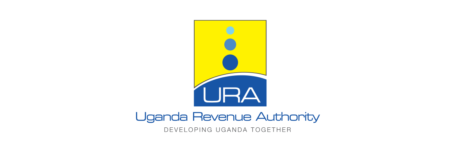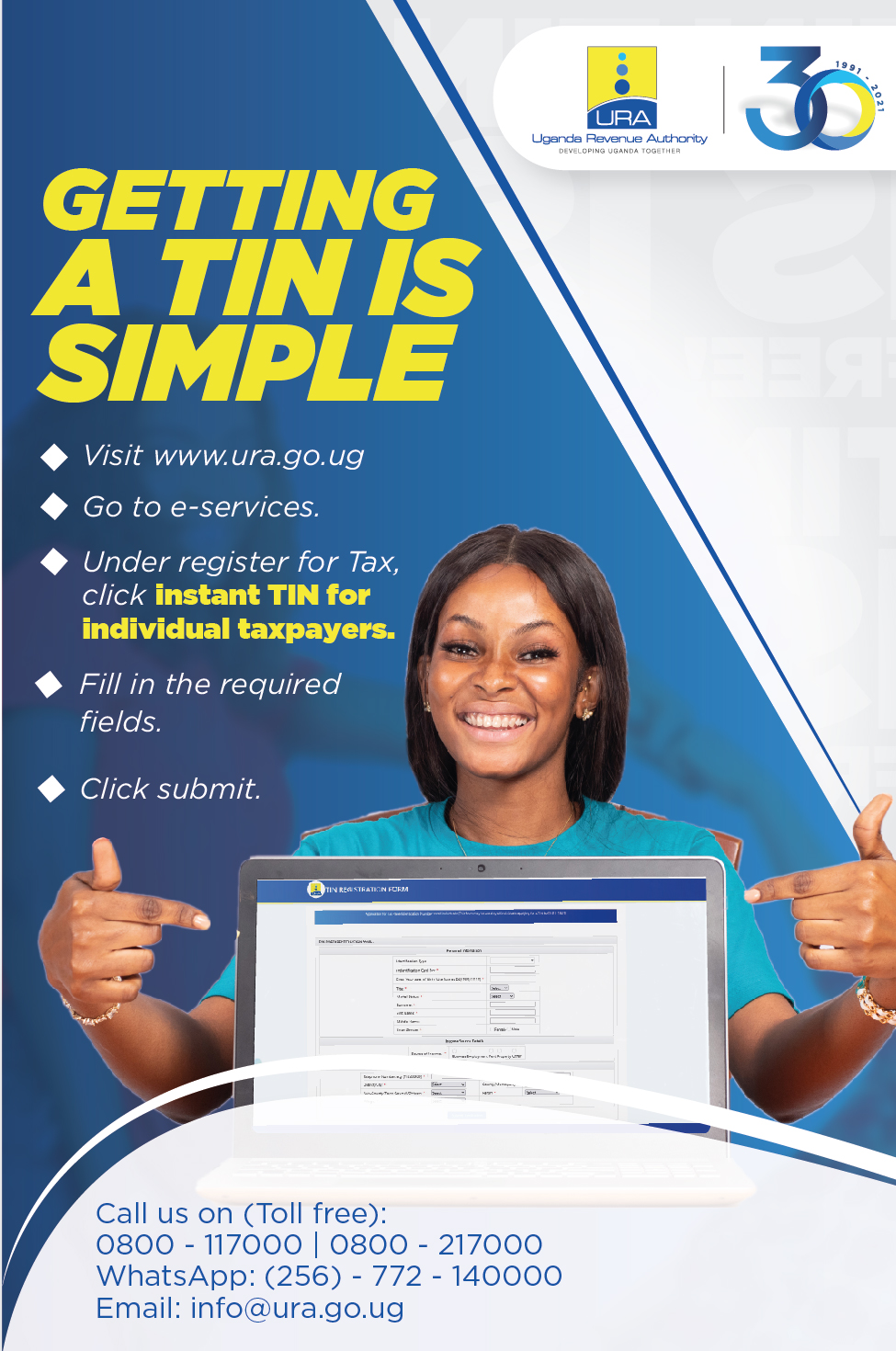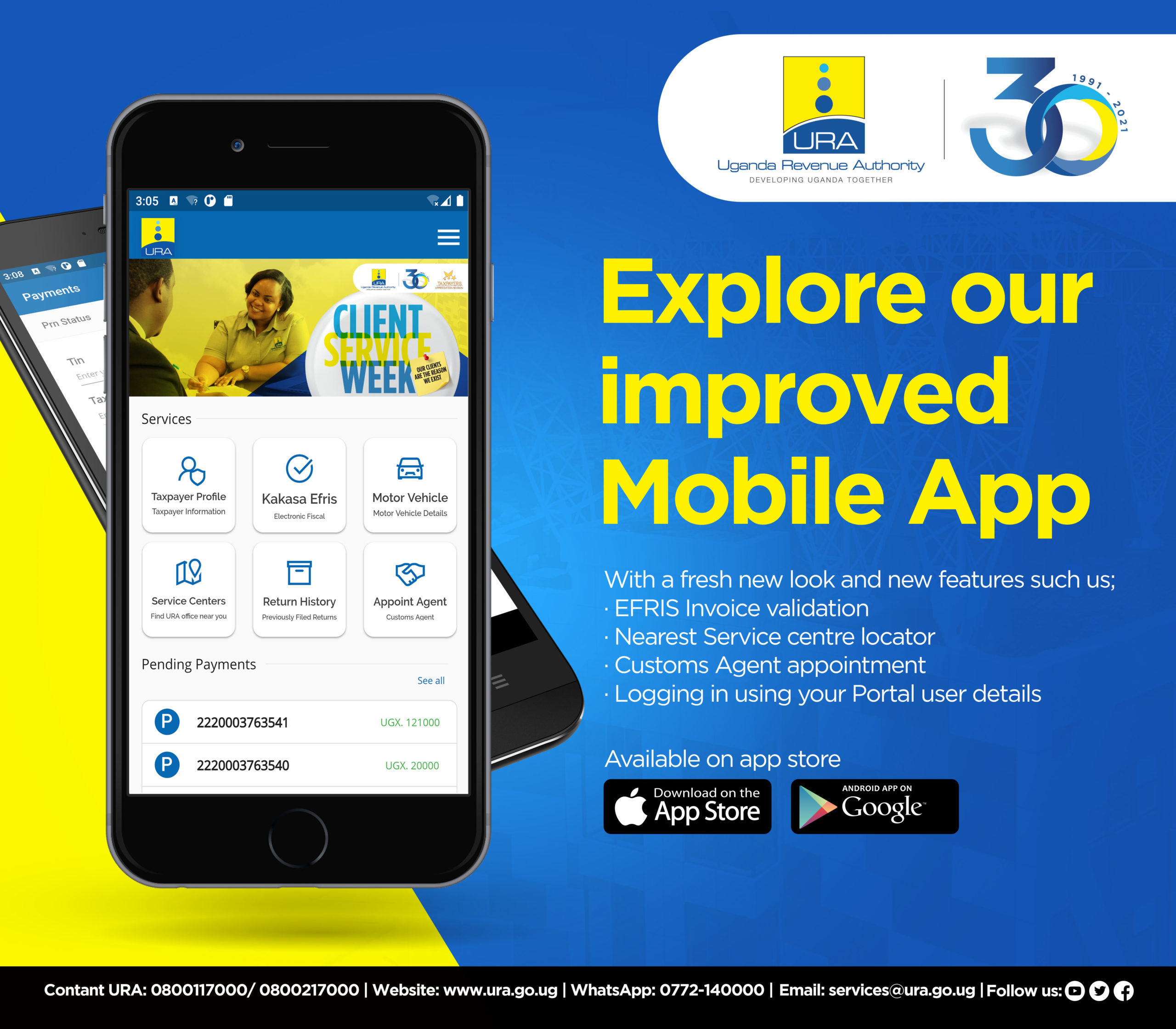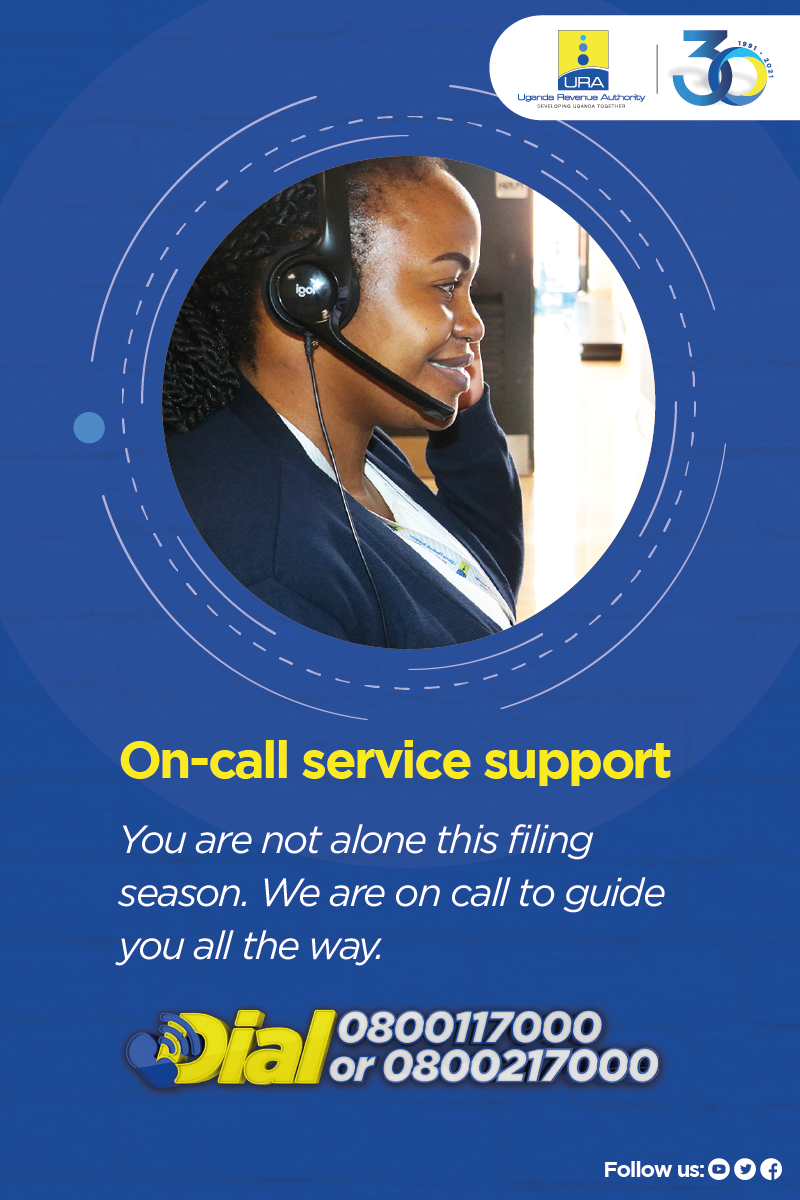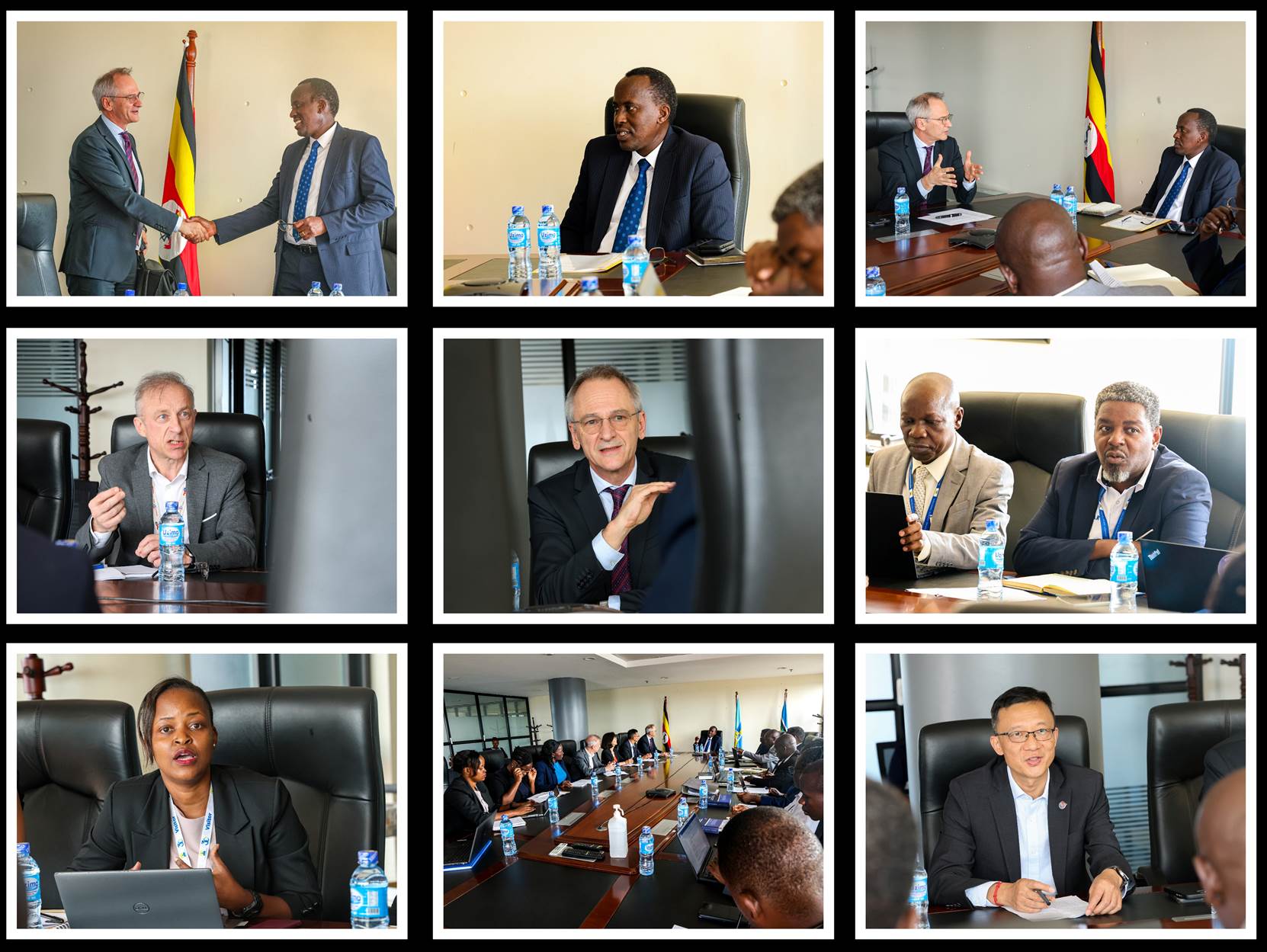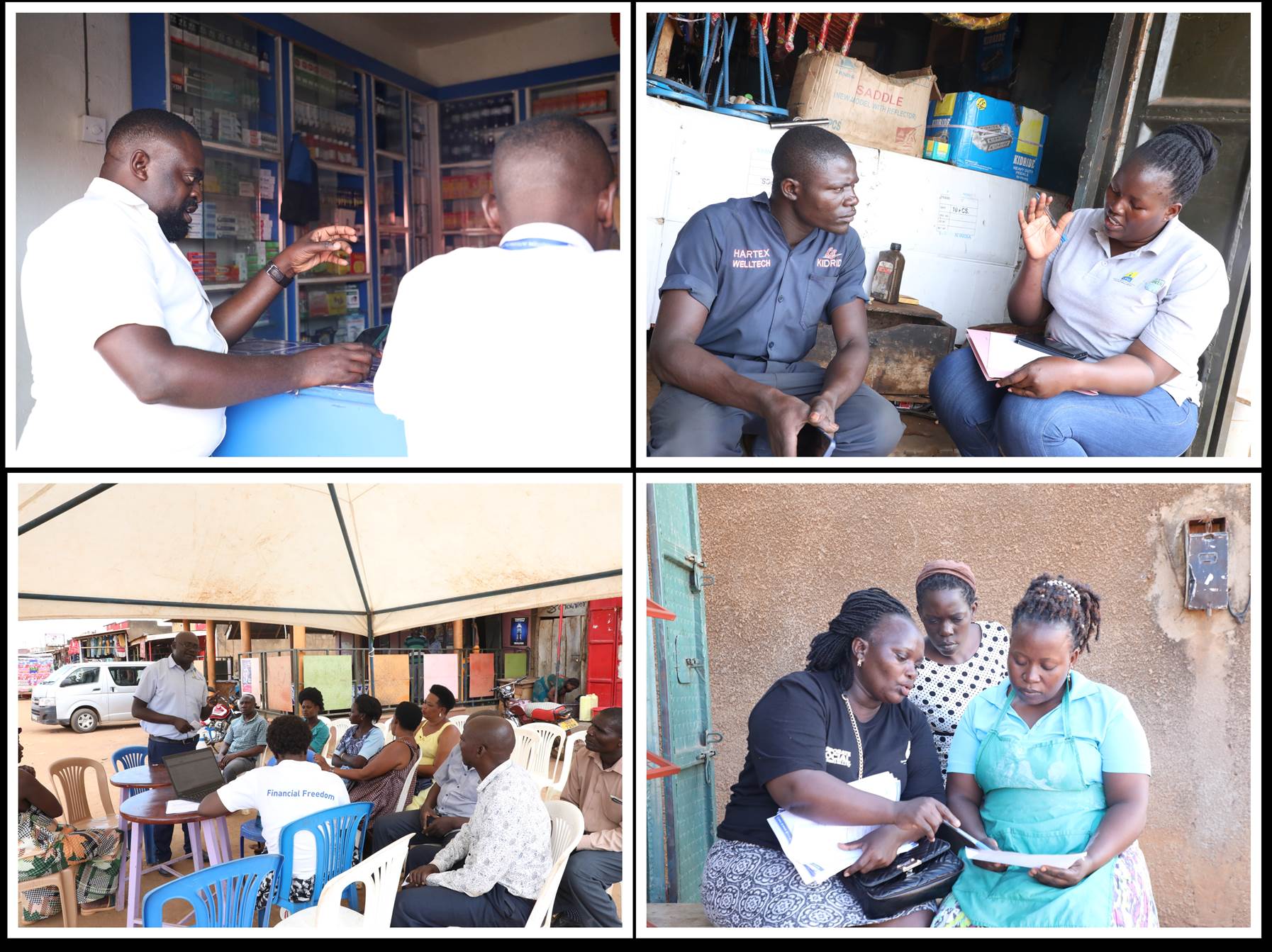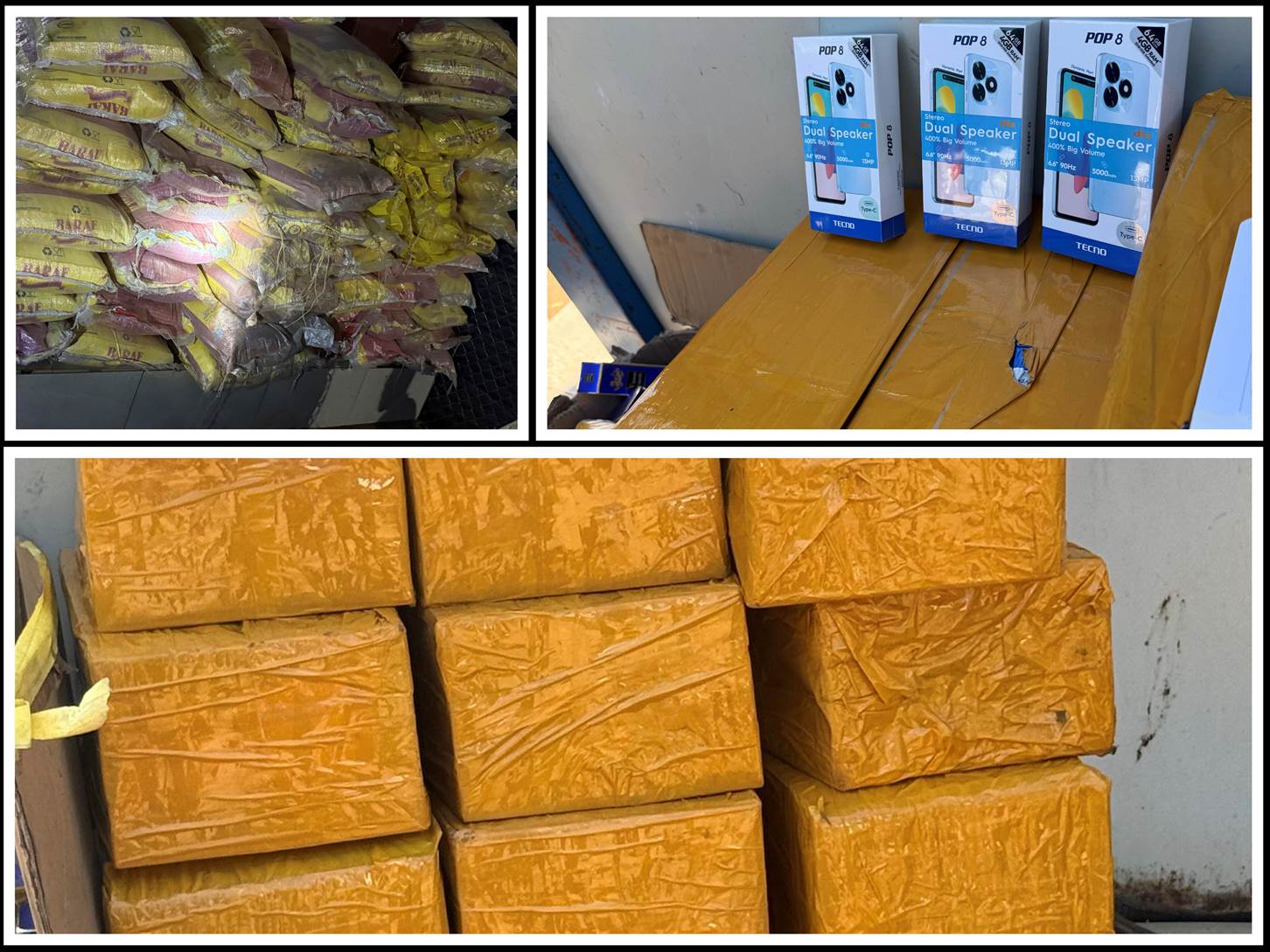


URA has been implementing several reforms in tax administration and the Customs Department is at the forefront of implementing several initiatives, including the World Customs Organization (WCO) SAFE Framework of standards (SAFE).
The SAFE was drawn up and adopted by the WCO in the year 2005 to help member countries implement systems and practices that would lead to the safety of the international supply chain and facilitation of trade. One of the tenets of the SAFE is the promotion of Customs to Business partnership. This requires Customs to form partnerships with reliable businesses and to grant them Authorized Economic Operator (AEO) status. The AEO status gives the client a privileged position (Authorization) when transacting business with Uganda Revenue Authority and other Customs Administrations with whom mutual recognition arrangement has been established. Customs commenced the implementation of the AEO scheme in 2009 under its modernization program with the setup of the AEO Task team to research, develop, pilot and implement the scheme.
The process of Authorization of “Reliable Businesses” is challenging. It requires a holistic approach that not only looks at the history of compliance with Customs laws and procedures, but also other aspects of the operations of the entity, which should be able to give reasonable assurance that the entity will continue to be compliant and also maintain the security of the entire supply chain.
Customs recognizes that many cases of non-compliance among its clients are often inadvertent but arise from weak operational systems within the entity. This therefore means Customs should come up with some basic benchmark to guide its clients on the elements of their operations that Customs would consider when judging an entity for Authorization. Consequently, after a meticulous process of extensive research and pilot, Uganda Customs developed the AEO Compliance program (CP) which is presented in this hand book. It brings together, in a comprehensive but simple style, the essential elements that are regarded by Customs as best practices in the management of an entity. These elements range from Internal Organization, Contracting Parties, Security, Customs due process, Consultation Cooperation and Communication, Crisis Management to Internal Audit framework. The materials are well researched and presented in a manner that encourages flexibility and innovation without compromising quality. I believe that this handbook will be useful not only to prospective AEOs but also to any other person who intends to institute and operate a well-managed business.
I wish to recommend this handbook to Individuals, Companies and Organizations who are interested in joining the AEO program as well anybody who would like to get a comprehensive knowledge about the AEO Minimum Eligibility Requirements. This book is meant to be a living book that will continue to address challenges of URA has been implementing several reforms in tax administration and the Customs Department is at the forefront of implementing several initiatives, including the World Customs Organization (WCO) SAFE Framework of standards (SAFE).
The SAFE was drawn up and adopted by the WCO in the year 2005 to help member countries implement systems and practices that would lead to the safety of the international supply chain and facilitation of trade. One of the tenets of the SAFE is the promotion of Customs to Business partnership. This requires Customs to form partnerships with reliable businesses and to grant them Authorized Economic Operator (AEO) status. The AEO status gives the client a privileged position (Authorization) when transacting business with Uganda Revenue Authority and other Customs Administrations with whom mutual recognition arrangement has been established. Customs commenced the implementation of the AEO scheme in 2009 under its modernization program with the setup of the AEO Task team to research, develop, pilot and implement the scheme.
The process of Authorization of “Reliable Businesses” is challenging. It requires a holistic approach that not only looks at the history of compliance with Customs laws and procedures, but also other aspects of the operations of the entity, which should be able to give reasonable assurance that the entity will continue to be compliant and also maintain the security of the entire supply chain.
Customs recognizes that many cases of non-compliance among its clients are often inadvertent but arise from weak operational systems within the entity. This therefore means Customs should come up with some basic benchmark to guide its clients on the elements of their operations that Customs would consider when judging an entity for Authorization. Consequently, after a meticulous process of extensive research and pilot, Uganda Customs developed the AEO Compliance program (CP) which is presented in this hand book. It brings together, in a comprehensive but simple style, the essential elements that are regarded by Customs as best practices in the management of an entity. These elements range from Internal Organization, Contracting Parties, Security, Customs due process, Consultation Cooperation and Communication, Crisis Management to Internal Audit framework. The materials are well researched and presented in a manner that encourages flexibility and innovation without compromising quality. I believe that this handbook will be useful not only to prospective AEOs but also to any other person who intends to institute and operate a well-managed business.
compliance in changing environments and will therefore be reviewed from time to time to ensure that it remains relevant to Customs and her Clients enhancing Informed Compliance.
I wish also to express sincere gratitude to those who put in tireless efforts in the implementation of this program as well as the companies and stakeholders who participated in the pilot activities. I wish also recognize the support of the development partners (Japan International Cooperation Agency and TradeMark East Africa) and WCO who have continuously supported this program.
I am therefore very pleased to present to you the very first edition of the “Uganda Customs AEO Compliance Program handbook” and recommend that those who have expressed interest to join the AEO program should implement it as part of the requirements.
Richard Kamajugo
Commissioner Customs Department
Customs plays a key role in facilitating international trade, protecting revenue and securing the International trade supply chain. In order to augment this, Uganda Customs has introduced the Customs AEO Scheme which incorporates a Compliance Program (CP). This Compliance program is a set of measures an applicant should implement to meet the requirements for becoming an AEO.
By awarding AEO status to participants in the supply chain, Uganda Customs is embracing Customs to Business partnership, one of the pillars in the SAFE framework of standards.
The primary goal of this Compliance Program is to enhance the Uganda Customs AEO’s commitment to following the Uganda Customs AEO standards. It covers a wide range of aspects including; Internal organization requirements, Contracting Parties requirements, Security requirements, Customs procedures requirements, Consultation, cooperation and communication requirements, Crisis management; Internal Audit Framework; Education, training and awareness.
This program seeks to:
i) Identify standard requirements for joining the Uganda Customs AEO scheme.
ii) Serve as a tool to enhance informed compliance.
iii) Guide clients in establishing procedures and measures to prevent, detect and correct noncompliance.
In accordance with the Uganda AEO Framework, the Compliance Program shall comprise the following elements which have to be studied and implemented:
Customs requires the business in respect of which an application is made for AEO status to have an organization structure that is suitable to the management of the flow of goods, and have internal controls capable of detecting illegal or irregular transactions.
The business shall implement measures including:
Documenting their internal structure
Periodically reviewing and appropriately organizing reporting relationships
Putting in place specialized units responsible for particular functions including establishment of a center office to manage this Compliance Program.
Documenting procedures by which employees within the different units of the business operate (E.g. sales, production, etc.)
i) Prioritizing Customs related business by assigning Customs responsibility to an executive with enough authority to ensure compliance with the Customs AEO requirements.
ii) Ensuring that adequate staff are responsible for customs activities and have the required proficiency.
iii) Documenting fallback procedures when key staffs are absent. The procedures outlining the arrangements for dealing with temporary or short term absences of key staff e.g. customs manager, import clerk including how their normal responsibilities are covered and by whom.
iv) Establishing punitive measures for any misconduct of employees against the Compliance program or relevant laws.
If part or all the operations are delegated to third parties e.g. Customs clearing agents, Bonded warehouse keepers etc., the person intending to join the Uganda Customs AEO scheme should:
i) Establish a framework to ensure that operations of contracting Parties conform to the compliance program (i.e. cargo control, conveyance/ premises security, documents security and customs procedure) including clearly specifying in contracts or other documents to the contracted parties that they have a responsibility to perform delegated operations in accordance with this compliance program.
ii) Establish a framework for reviewing all relevant commercial information relating to the Contracting parties (Including the background checks you perform to confirm their suitability) before entering into contractual relations.
3.3.1 Cargo security
i) Establish a framework at storage facilities to ensure timely and proper control (receiving, storage and removal) of cargo.
ii) Establish a framework to verify:
In the case of imports, the status of the cargo before, unloading from a truck/aircraft, carrying into or out of airport or entry port and other bonded areas, and movement from the port to the storage facility.
In the case of exports, the status of the cargo before carrying into/out of the port facility and loading onto the aircraft, truck etc.
iii) Establish a framework to ensure that business partners are meeting cargo security requirements i.e. (i) and (ii) above.
3.3.2 Cargo conveyance Security
i) Establish a framework to appropriately check the route, mode of transportation and properly track the movement of cargo in transit.
ii) Establish a framework to ensure that business partners are meeting cargo conveyance security requirements.
i) Implement measures at the all facilities to:
Check and record traffic of persons, vehicles and cargo entering.
Provide sufficient physical security equipment i.e. locking devices, barrier, fencing, and lighting, placement of guards, periodic patrols and installation of video surveillance cameras.
Ensure distinction between controlled cargoes and other cargoes.
Ensure timely reporting of any anomaly found in the stored cargo to the quality control section.
ii) Implement measures to:
Train employees to recognize potential internal threats to security.
Prevent unauthorized access to premises, goods, vehicles, automated systems, seals, and records by employees, visitors and vendors/contractors.
iii) Establish a framework to ensure that business partners are meeting premises security requirements i.e. (i) and (ii) above.
Customs requires you to implement satisfactory measures to screen the background of all prospective employees and to identify all employees.
The measures to implement will include:
i) To take reasonable care when recruiting new staff to assess their risks in terms of internal /external security, Customs and other criminal offences. Have employee identification procedures that require all employees to display official identification issued by the company.
ii) Have procedures to remove identification from employees whose employment have been terminated.
Customs requires you to
i) Implement satisfactory measures for the storage, retrieval of records and protection against any loss of information.
The measures could include;
Specifying how long the data remains available on-line in its original form.
Specifying how and for how long the data is archived.
Specifying the kind of media on which the data is stored.
Specifying the software format in which the data is stored .
ii) Implement measures to protect computer system against unauthorized access. Customs requires you to have appropriate information technology security measures, for example firewalls and anti-virus protection.
The measures should include:
An updated safety plan describing the measures in place protecting your computer system from unauthorized access as well as deliberate destruction or loss of information.
Details of whether you operate multiple systems at multiple sites and how they are controlled.
Who is responsible for the protection and running of the company’s computer system (Responsibility should not be limited to one person only but to several persons who are able to monitor each other’s actions).
How you issue authorization for access and the level of access to the computer systems. (Access to sensitive information should be limited to staff who are authorized to apply changes/additions to the information).
The format for setting passwords, frequency of changes and who issues passwords.
Details of firewalls and anti-virus protection.
Procedure for removal/maintenance/updating of user details.
Dealing with incidents when the system has been compromised.
The frequency of testing your system against unauthorized access and the recording of results.
A business continuity/disaster recovery plan in case of incidents
Back-up routines when your system does not work, including restoration of all relevant programs and data.
iii) Implement measures to guarantee document security. The measures should include:
Recording and back-up of documents including limiting access.
An updated safety plan describing the measures in place to protect documents and to deal with incidents which compromise document security. Procedures for filing and secure storage of documents including levels of access, and authority to change details in documents.
Testing your record management system against unauthorized access and recording the results.
Documentation of remedial action taken as a result of any actual incidents.
iv) Implement measures to control your standing data?
Standing data (master files) mean key information about your business
e.g. customers’ names and addresses, suppliers, product files containing information on the description of the goods, commodity codes and origin etc.
The measures should include:
How you set up, maintain, change and archive standing data which are relevant to customs.
Who is responsible for these within your business.
If you use a third party, the functions they perform.
How changes to standing data are authorized.
How access to standing data is controlled within your business.
The applicant for the AEO status should implement measures which shall include inter alia:
i) A list of goods imported or exported including items such as:
Description of goods.
Tariff classification and applicable rate.
Shippers’ names for imports and consignees’ names for exports.
Trade control regulations if applicable e.g. Origin preferences.
Other relevant information.
ii) Establish a framework to share the list within the company and to submit it in a timely manner upon request by Custom.
iii) Establish a framework to review and update the list when there is a change in the laws and regulations or when the nature of business changes.
i) Implement measures to verify the accuracy of Customs declarations including those submitted on your behalf by third party representatives
e.g. Customs agents.
The measures should cover:
How you ensure the completeness, accuracy and timeliness of customs declarations you make yourself, including performing management checks.
Presentation or availability of supporting documentation.
Matching the Customs declarations with relevant documents including invoice and import/export list.
Updated details (names and addresses) of agents/third parties used.
How agents are appointed e.g. the credibility and suitability checks you perform before you appoint them.
Contracts detailing responsibilities, including the type of representation by agent e.g. direct, indirect.
The way you provide clear instructions to your agent.
What the agent should do if the instructions are unclear.
How you provide supporting documents (e.g. licenses, certificates, invoices, bills of lading, airway bill, etc) to your agent, including presentation and retention/return.
Checking/verification of the accuracy and timeliness of your agent’s work.
How you notify your agent of any errors/amendments regarding cleared entries.
Dealing with irregularities.
Voluntary disclosures of errors to customs.
ii) Preparedness for requests by customs for submission of relevant documents and cargoes for examination.
iii) A procedure for classification of goods including:
The name and position of the member of staff responsible for classifying your goods or if you use a third party to do this work, include their names.
How you classify new goods/products – including the information used to classify the goods e.g. up to date Tariff.
How, by whom and the frequency you review the classifications and update the product file and any other dependent records as well as notifying any persons affected by the change e.g. agent, purchasing staff.
The resources/information, e.g. up to date tariff, technical information you usually use to classify your goods.
iv) A procedure for claiming preferential rates of duty including:
How you ascertain that goods from the particular exporting country are entitled to a preferential rate of duty.
Ensuring that a valid and original certificate of origin is available when preference is claimed.
How you ascertain that the certificate of origin is appropriate for the consignment.
Ensuring that there is no opportunity to duplicate use of the certificate of origin.
Ensuring that original certificates are retained as part of the audit trail in a safe and secure manner.
v) A procedure for determining correct value of duty and VAT for both imports and exports including:
Valuation method(s)1 used.
How the customs values are determined.
How freight and insurance costs are accounted for.
Procedure for declaring buyer and seller relationship in terms of the. Fourth schedule EACCMA and the influence the relationship may have on the price of the imported goods.
vi) A procedure for identifying and disclosing irregularities/errors to Customs or other regulatory authorities as appropriate including:
The appointment of a responsible contact person within your business to disclose irregularities/errors, including suspicion of criminal activity, to customs or other government departments.
Management checks to ensure procedures are followed.
vii) A procedure for appointing agents including:
The credibility and suitability checks you perform before you appoint them.
Submission of relevant documents for customs clearance to contracted customs agent.
The way you provide instructions to your agent.
Checking of the accuracy of your agent’s work.
3.5.1 The Accounting and logistical framework
Customs requires that you to implement a framework for keeping and maintenance of books and records including an Accounting and logistical system that will enable audit-based Customs controls.
The applicant to the Customs AEO scheme should implement:
Measures to have a complete audit trail in the accounting system in order to maintain historical records that enables one to trace a piece of data from the moment it enters the file to the time it leaves.
Measures to readily avail to customs, documents outlining the electronic processing system for the maintenance and book keeping and/or its operating manual, if the company’s records are electronically processed.
An accounting system including the General Ledger, Sales ledger, Purchase Ledger, Assets Ledger and Management Accounts.
A logistical system including the Sales/purchase order processing, Inventory control, Storage, Manufacturing and Shipping
Customs requires that you implement a framework of internal controls over the purchase, storage, movement and manufacturing as appropriate. The measures should also cover transportation and freight forwarding.
The applicant for the Uganda Customs AEO scheme should implement:
a) Measures to control storage of stock including;
A clear assignment of a location for storage of the goods.
Safe storage and disposal of dangerous/hazardous goods.
Frequent stock-taking.
If a 3rd party’s premises is used to store your goods, arrangements including reconciliation between your and 3rd party’s stock record.
Recording and controlling the stock.
Identifying EAC and non-EAC goods.
Arrangements for dealing with breakages, deterioration or destruction of goods, losses and stock variations.
b) Measures to control purchase of stocks including;
Purchase ordering procedures.
Confirmation of purchase orders.
Shipping/transport of goods.
Customs clearance arrangements.
Supporting documentation requirements.
Payment/settlement.
How, when and by whom are goods entered into the stock record.
Reconciliation between purchase order and goods received.
Arrangements for returning/rejecting goods.
Arrangements for accounting and reporting short and over shipments.
Arrangements for identifying and amending incorrect entries in the stock records.
c) Measures to control manufacturing processes including;
Raising the works order
Requisitioning of stock items and delivery from storage.
Manufacturing process, staff responsibilities, and records maintained.
Recipe codes.
Recording the manufactured product and unused stock in the stock records.
Use of standard manufacturing methods in the production.
Monitoring and management controls of the manufacturing process e.g. rates of yield.
How you deal with irregularities, variations, waste, by-products and losses in the manufacturing process.
Quality inspection of manufactured goods and recording of results.
d) Measures to control delivery of goods from stock to customers, including;
Receiving customer order and raising works or purchase order.
Informing the warehouse of the sale order/release of the goods.
Picking.
Packing procedures.
How, when and by whom are the stock records updated.
Dispatch/collection notes.
Raising sales invoices.
Acknowledgement of receipt/evidence of shipment of goods.
Returned goods – inspection, counting and recording in stock.
Payment and credit notes.
e) Measures to control issuing certificates/Invoices at (re) export including how you ensure:
Goods qualify for an export preference e.g. meet the rules of origin.
All necessary documents/calculations/costing/descriptions of processes to support preferential origin and the issue of a certificate/invoice declaration are retained as part of the audit trail in a safe and secure manner.
Appropriate documents e.g. invoice declaration are signed and issued timely by an authorized member of staff.
Documents (Certificates, invoices. etc.) are presented as required to customs at export.
It is required that the applicant to the Customs AEO scheme:
a) Establishes a communication channel with Customs by: i) Appointing designated contact person(s).
ii) Establishing a protocol to immediately notify Customs and any other relevant authorities on the following occasions:
Any future change of information about the applicant.
When illegal, suspicious or unaccounted for cargoes and, or activities are discovered. When any other errors, omissions and irregularities are discovered.
When any emergencies arise that may affect Customs operations.
iii) Establishing a protocol to:
Provide documentation or information upon requests from Customs.
Disseminate information from Customs to relevant sections within the organization.
b) Establishes a framework for communication with, instructions to, and supervision of relevant operations of business partners.
To minimize the impact of a disaster2, the applicant to the Uganda Customs AEO program is required to implement measures to operate in such circumstances.
The measures should include:
a) Establishing a reporting framework in case of emergency for: i) Reporting within a unit.
ii) Reporting to the executive responsible for implementation of the Compliance program.
b) Establishing a framework for investigation, remedial and preventive measures in case of emergencies related to cargoes processed under the operations.
This compliance program element requires that the applicant to the Customs AEO program, on periodic and continuous basis, establishes a framework for:
a) Working with Customs to educate the personnel involved in the operation of Customs AEO and trading partners on the risks associated with the movement of goods in the supply chain.
b) Plan, educate and train managers, workers and where appropriate its trading partners with the aim of raising awareness of the compliance program.
An internal audit framework should be established to ensure appropriate implementation of the Compliance program.
2 Any incident/occurrence that can cause disruption of the smooth flow of the supply chain
This shall include undertaking the following measures:
a) Selection of appropriate auditor(s)
b) Appropriate planning, clear identification of the scope, timing of the audit and a framework for continuous review for sophistication of audits.
c) Ensure action is taken on internal audit recommendations by:
i) Establishing a protocol for communicating internal audit recommendations to the Chief executive and the executive responsible for implementation of the Compliance program.
ii) Establishing a protocol to communicate internal audit recommendations to the audited sections immediately after compiling the internal audit report for proper implementation of the recommendations.
Access control : Access control is a system which enables an authority
to control access to areas and resources in a given physical facility or computer-based information system.
Business partners : Current and prospective suppliers, manufacturers,
Service providers, contractors and vendors where companies outsource or contract elements of their supply chains.
Cargo conveyance Security: Preservation of the integrity of cargo during conveyance.
Cargo Security : Preservation of the integrity of cargo.
Certificate of Origin : A specific document identifying the goods, in which
the authority or body empowered to issue it certifies expressly that the goods to which the certificate relates originate in specific country. This certificate may also include a declaration by the manufacturer, producer, supplier, exporter, or other competent person.
Note : In this definition the word “country” may include a group of countries, a region or a part of a country.
In this definition the word “country” may include a group of countries, a region or a part of a country.
Classification : Classification of goods in line with WCO Harmonized
System of commodity coding.
Compliance : Refers to compliance with Customs laws and
regulation.
Compliance Program: Refers to a set of measures designed to.
Contracting Parties : Current and prospective suppliers, manufacturers,
service providers, contractors and vendors where companies outsource or contract elements of their supply chains.
Controlled cargoes : Goods subject to Customs control.
Authorized Economic Operator (AEO): Is a party involved in the international
movement of goods in whatever function that has been approved by Customs as complying with Customs AEO eligibility standards. Authorized economic operators include inter alia manufacturers, importers, exporters, brokers, carriers, consolidators, intermediaries, ports, airports, terminal operators, integrated operators, warehouses, distributors.
Customs Authorized Economic Operator Program: A program that seeks to accomplish
a partnership approach between customs and those clients who have appropriate record of compliance to the East African Customs Management Act, regulations, and maintain high quality internal operational processes and computer systems.
Customs clearing agent: A person (licensed by Customs) who carries on the business
of arranging for the Customs clearance of goods and who deals directly with the Customs for and on behalf of himself or another person.
Customs controls : Measures applied by the Customs to ensure
compliance with Customs law.
Customs procedures : Treatment applied by the Customs to goods which are
subject to Customs control.
Notes
- The reference to “goods” includes means of transport.
Documented Procedures: Means documented and practiced procedures.
EAC : East African Community.
EACCMA : East African Community Customs Management Act.
Information Security: Protecting information and information systems from
unauthorized access, use, disclosure, disruption, modification, perusal, inspection, recording or destruction.
International trade supply chain: International Supply Chain covers all stages
following the recognition of need by a Customer for a product or service to the fulfillment of an order by a Supplier and the resulting financial settlement. It incorporates any necessary activities carried out by Intermediaries and Authorities. The international supply chain therefore includes the following functions; manufacturers, importers, exporters, brokers, carriers, consolidators, intermediaries, ports, airports, terminal operators, integrated operators, warehouses, distributors.
Premises security : Securing a business premises to ensure that no
unauthorized cargo or persons gain access.
WCO SAFE Framework: World Customs Organization Framework of Standards to
Secure and Facilitate Global Trade.
